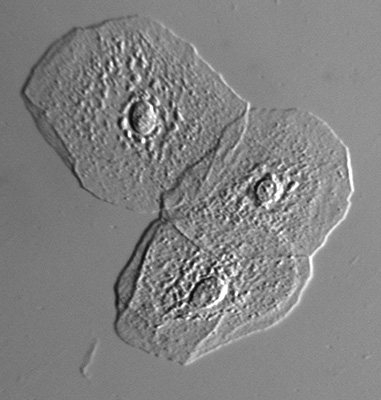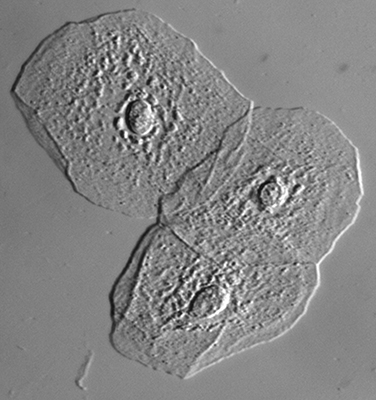In the August 2024 article I shared studies of DIC at near IR wavelengths. This has some merits for revealing detail with dense insect exoskeletons which transmit near IR better than visible wavelengths. One paper found also described the use of the technique for thick unstained brain sections where the increased depth of field was also useful.
To date, I hadn't explored using either phase or DIC with either near IR or near UV ... so why not 'try it and see'. With an admittedly limited knowledge of the principles behind phase and DIC it also prompted some reading to gain an insight into whether one or both techniques should still be effective. This is part 2 of a four part series of short notes to share these explorations.
DIC towards near UV wavelengths
A casual search online has not revealed any papers so far using near UV or UV with DIC. Searches being confounded by 'UV-DIC' referring to 'digital image correlation' with UV illuminated subjects not using microscopy.
Image trials.
Zeiss 16/0.35 planachro' for the cheek cells, this is the correct objective for the number I prism of condenser owned. Serial number not optimal so not an evenly toned background.
Camera ZWO ASI178MM monochrome camera. This small sensor used without an eyepiece or relay lens only captures about a third of the central visual field. As planachromatics may not be well corrected for spherical aberration at wavelengths near edge of the visible, this central image capture should go some way to minimise any uncorrected aberration of this type.
Image work up. The tonal range can vary widely when changing wavelengths so the highlights and shadows were adjusted but tonal mid-range left.
Knight Optical 420 nm interference filter. A wavelength within the visible was chosen to further minimise any spherical aberration for objectives not corrected at or beyond deep blue.


Fresh unstained epithelial cheek cells mounted in water. Zeiss 16/0.35 planachromatic. This is a useful subject to assess a contrast enhancement technique as they are near transparent in on-axis brightfield.
Lefthand image, visible DIC. Cell details are clearly presented in DIC.
Righthand image, 420 nm DIC. The DIC effect is clearly still present providing a hands-on demonstration that DIC is active towards near UV.
There is no real merit in using 420 nm with DIC for cheek cells as the cellular detail is rather granular / coarse and not enhanced by using a lower wavelength.


Klaus Kemp 8 form test slide, 420 nm interference filter. Stauroneis phoenicenteron. Zeiss 40/0.65 planachro.
The DIC effect is still clearly present.
Decreasing the wavelength in DIC can be more useful for this sort of subject as increases the resolution of detail.
The planachro' is the correct objective for the Zeiss system possessed but not a high NA objective which is especially useful for diatom frustule imaging.
Keeping just in blue should avoid moving the objective away from its correction for spherical aberration, although the small sensor captures only 30% of central field which should also help.
Better corrected objectives could use a lower wavelength. I do have a Neofluar 40/0.75 but not an ideal serial number and does not give an even DIC background.
Comment.
Postscript. Thinking aloud on why DIC works at near IR (or near UV) wavelengths. With my admittedly limited grasp of theory the thoughts shared are speculative and welcome comments. The Molecular Expressions site is invaluable for
describing the fundamentals of DIC and reference 1.
The Nomarski prism below the condenser splits the plane polarised incoming light into an ordinary and extraordinary ray. This ability (and for the prism above the objective recombining rays) is not wavelength dependent for the technique to work at the near IR or near UV wavelengths.
The DIC technique "transforms local gradients in optical path length into regions of contrast in the object image" (ref. 1).
Optical path length = refractive index x thickness (between the two local points on that path) (ref. 1).
The variation of RI from near IR through visible to near UV for water in say a water based organism is quite small (see this graph). The difference in RI between the ordinary and extraordinary ray also remains constant for
e.g. sapphire (see this graph). So presumably there would be little evidence of a change in the 'strength' of the DIC effect as change the wavelength but details resolved would be affected by the change in resolution.
Reference
1 - Fundamentals of Light Microscopy and Optical Imaging by Douglas B. Murphy and Michael W. Davidson, pub. Wiley-Blackwell 2013, p.173ff.
Comments to the author David Walker are welcomed.